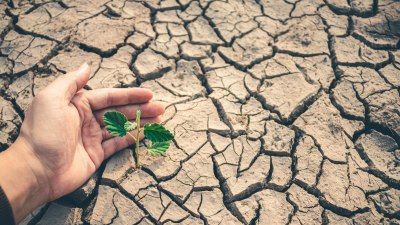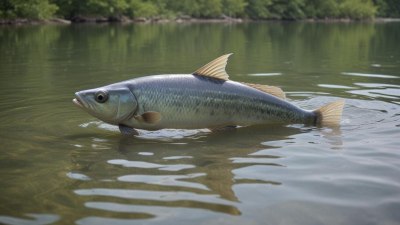What Causes Droughts and How They End Abruptly
Explore the causes of droughts and the sudden conditions that may bring them to an end.

Droughts are prolonged periods of abnormally low rainfall, resulting in a water shortage that affects agricultural production, drinking water supplies, and the overall health of ecosystems. Understanding the causes of droughts and the factors that can lead to their abrupt conclusion is essential for effective water management and disaster preparedness. This article will delve into the multifaceted causes of drought, ranging from climatic events to human activities, and will examine how certain conditions can lead to a sudden end of these dry spells.
Understanding Drought: Definition and Classification
A drought can be categorized into three main types: meteorological, agricultural, and hydrological. Meteorological drought refers to a significant decrease in precipitation that leads to insufficient moisture in the atmosphere. Agricultural drought occurs when the rainfall level is inadequate to meet the water requirements of crops, impacting agricultural production. Hydrological drought is characterized by low water levels in rivers, lakes, and reservoirs, impacting water supply for municipal use and irrigation. Each type reflects the diverse impacts of drought on the environment, agriculture, and society.
Causes of Drought
Droughts can arise from a combination of natural processes and human-induced factors. Here are some of the primary causes:
1. Climatic Factors
Climate plays a crucial role in determining rainfall patterns across the globe. A shift in climate, influenced by phenomena such as El Niño and La Niña, can lead to variations in precipitation. During El Niño conditions, certain regions may experience increased rainfall, while others might suffer from significant dryness. On the other hand, La Niña often brings about drier conditions, leading to drought in various parts of the world. These phenomena are driven by ocean temperature shifts and have significant impacts on global weather patterns.
2. Human Activities
Human activities significantly contribute to drought conditions, particularly through land use changes and water management practices. Urbanization often results in increased impervious surfaces, leading to decreased natural water absorption and increased runoff. Deforestation can disrupt local climates and reduce precipitation. Over-extraction of water for agricultural, industrial, and domestic purposes can deplete aquifers and reduce streamflow, exacerbating drought conditions. Poor agricultural practices, such as excessive irrigation and monoculture, can degrade soil health, making it more susceptible to drought.
3. Soil Conditions
The condition of the soil plays an essential role in drought severity. Soil with low organic matter and poor structure may become compacted, reducing its ability to retain moisture. This creates a feedback loop, where dry conditions lead to further degradation of the soil, making recovery and precipitation absorption more challenging. Soil erosion, often exacerbated by human practices, can wash away nutrient-rich topsoil, further diminishing land's capacity to support vegetation.
4. Regional and Local Weather Patterns
Weather patterns, dictated by geographic features such as mountains, can create regions of rain shadow, where one side receives abundant rainfall while the other remains dry. Local atmospheric conditions, including high-pressure systems, can block moisture-laden winds, causing extended dry spells. Droughts can become severe when these conditions persist over time, leading to increased demand for water resources.
5. Climate Change
Climate change is altering precipitation patterns and increasing the frequency and severity of droughts in many regions. Rising global temperatures contribute to enhanced evaporation rates, reducing soil moisture and streamflow. Additionally, changing weather patterns can lead to prolonged dry spells, affecting regions previously buffered from drought conditions. Climate change can create a cycle of drought, where increasing aridity leads to decreased vegetation cover, which in turn exacerbates drought impacts.
Impact of Droughts
The impacts of drought are far-reaching, affecting agricultural output, freshwater availability, ecosystems, and economies. Crop failures can lead to food shortages and increase food prices, disproportionately impacting vulnerable populations. Water scarcity can hinder economic activities, lead to social unrest, and contribute to conflicts over resources. Ecosystems suffer as habitats degrade, leading to loss of biodiversity. Aquatic ecosystems often experience changes in species composition and population declines as water levels drop.
Signs of Ending Droughts
Though drought can have severe impacts, many droughts do eventually come to an end. Several signs indicate that a drought may be concluding:
1. Increased Precipitation
The most apparent sign of an ending drought is replenished rainfall. A series of rainstorms, particularly those sustained over weeks or months, can restore outflows in rivers and lakes and fill reservoirs, alleviating water shortages. However, the timing and intensity of the rainfall are critical; too much rainfall in a short period can cause flooding, exacerbating existing challenges.
2. Soil Moisture Replenishment
As rainfall increases, soils begin to absorb moisture, which is crucial for agricultural recovery. Soil moisture levels improve, supporting the growth of crops and vegetation. Plants begin to revive, showcasing new growth as they access much-needed water resources. Monitoring soil moisture levels is an essential indicator of drought status and recovery potential.
3. Snowpack Accumulation
In many regions, particularly those with cold winters, snowpack accumulation is a key indicator of water availability for the following growing season. A robust snowpack can indicate a slow release of water into streams and rivers as temperatures rise in the spring. This gradual melting allows for more stable and longer-lasting water supply compared to sudden rainstorms.
4. Groundwater Recharge
Rainfall events contribute to groundwater recharge, critically for many regions reliant on aquifers for water supply. This process can take time, as water seeps through soil layers into underground reservoirs replenishing levels that have dropped during the drought. Monitoring groundwater levels is essential for understanding both drought impact and recovery.
5. Ecosystem Recovery
An observable recovery in ecosystems is another sign of an ending drought. Healthy plant growth, resuming animal populations, and restored habitats reflect the increasing availability of water. Ecosystems can often recover from drought when moisture levels increase, leading to a resurgence of biodiversity and a return to ecological balance.
Strategies for Mitigating Drought Impacts
To combat drought and its impacts, several strategies can be implemented at different levels. Here are some effective mitigation strategies:
1. Water Conservation
Promoting efficient water use and encouraging conservation practices can significantly help mitigate drought impacts. Strategies include promoting drought-resistant landscaping, using drip irrigation systems, and implementing water-saving appliances in households. Awareness campaigns can educate communities on the importance of water conservation during dry periods.
2. Sustainable Land Management
Adopting sustainable agricultural practices, such as crop rotation, cover cropping, and organic farming, can improve soil health and resilience against drought. Ensuring soil is rich in organic matter promotes better moisture retention and reduces erosion, which can exacerbate drought conditions.
3. Improved Water Management
Implementing better water management strategies, including rainwater harvesting and the efficient operation of reservoirs, can help maximize available water resources. Integrated water resource management approaches consider both quality and quantity, supporting a cohesive strategy to address water demands during periods of drought.
4. Research and Monitoring
Ongoing research into climate patterns and drought prediction is vital for enhancing preparedness. Investing in monitoring systems for rainfall, soil moisture, and groundwater can help provide early warning signs of potential drought conditions, allowing communities to take corrective actions ahead of severe impacts.
5. Policy Development
Creating and implementing policies aimed at reducing vulnerability to drought can make a significant difference. Collaborative efforts across governmental and non-governmental organizations can lead to better water governance, improved infrastructure, and community engagement in drought preparedness planning.
Droughts are complex phenomena influenced by a wide range of both natural and human-related factors, with severe repercussions for societies and ecosystems. While they can be challenging to combat, understanding the causes of drought and implementing strategies for mitigation are crucial for resilience against these events. It is equally important to recognize the signs that indicate a drought may be ending, ensuring communities can ease into recovery effectively. By promoting sustainable practices and enhancing management policies, we can better navigate the challenges posed by drought and work toward a more resilient water future.











